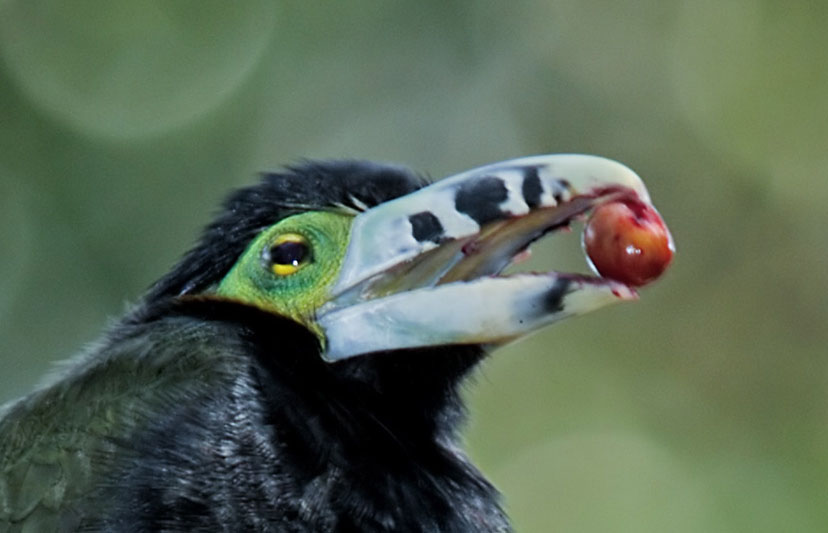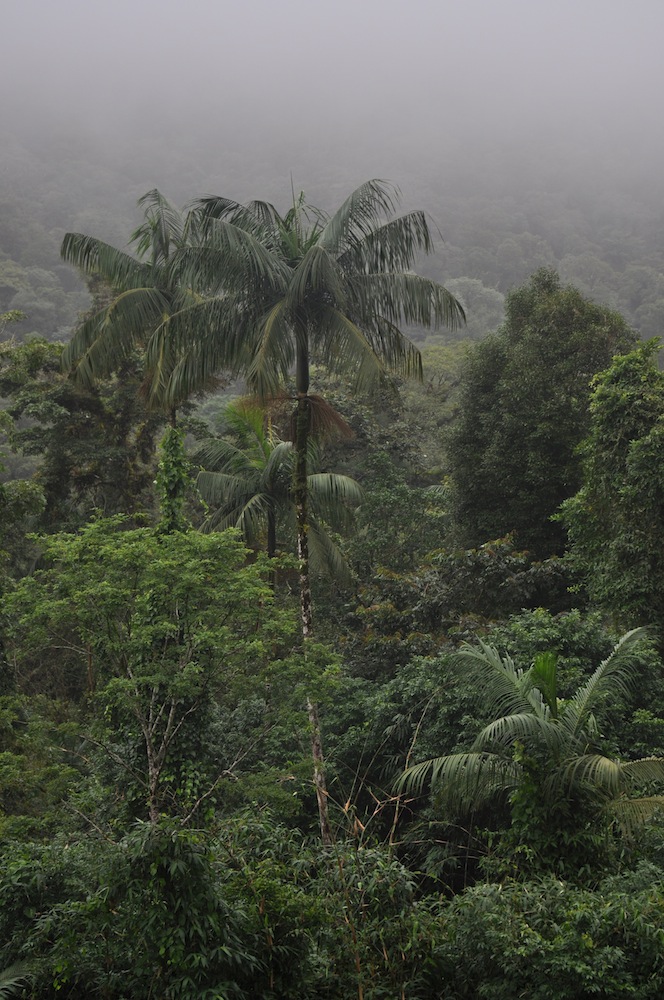Deforestation Plants the Seed for Rapid Evolution in Brazil

The deforestation of the Brazilian rain forest has created a hidden consequence: The seeds of palm trees have evolved rapidly to be smaller.
The change is the result of a domino effect that begins with human agriculture and hunting, which have devastated large bird populations in the Atlantic Forest of Brazil. With these birds, which include colorful toucans and cotingas, locally extinct or barely hanging on, the palm trees have no way to disperse their largest seeds. As a result, seed sizes are smaller in parts of the rain forest where large birds are missing, finds a new study detailed in the May 31 issue of the journal Science.
Combined with climate change, the result could be devastating for palms, said study leader Mauro Galetti, an ecologist at Paulista State University in Brazil.
"If we think about climate change, we will have less rainfall, and we know that for smaller seeds, they lose more water than large seeds," Galetti told LiveScience. "That's a major problem for this palm." [Images: Palm Trees and Lost Birds of Brazil]
Shrinking seeds

The Atlantic Forest runs along the coast of Brazil, starting at the easternmost tip of South America and continuing approximately to the country's southern border. The region has been heavily altered by human agriculture, with only about 12 percent of the original forest remaining. Of that area, about 80 percent is disjointed fragments too small to support large animals. As a result, large fruit-eating birds have vanished or nearly vanished from much of the forest. These birds swallow fruit seeds and spread them through their droppings over many miles, making the animals crucial to the forest ecosystem.
Galetti and his colleagues studied seed sizes in 22 populations of palm trees, some in fragments where hardly any large birds survive and others where bird populations are relatively robust.
Sign up for the Live Science daily newsletter now
Get the world’s most fascinating discoveries delivered straight to your inbox.
They found that seeds are consistently smaller in sites without large birds. Seed sizes vary, but in areas with few or no large birds, common sizes range from about 0.3 to 0.4 inches (8 to 10 millimeters) in diameter, with almost no seeds a half-inch (12 mm) in diameter. In areas with robust large-bird populations, half-inch (seeds are common, with some seeds reaching 0.55 inches (14 mm). In sites without large birds, the researchers found that seeds with a diameter of a half-inch or larger had nearly no chance of being dispersed away from their parent tree.
Other factors — such as soil fertility, forest cover and climate — could not explain the change in seed size, the researchers reported.
Human action
Using genetic data from the seeds, Galetti and his colleagues created computer models to figure out how long it would have taken trees to evolve smaller seeds in bird-free zones.
"For the plants that we studied, it was 50 to 75 years," Galetti said. "It's quite fast."
Human deforestation in the Atlantic Forest dates back to the 1800s, more than enough time for the observed changes to evolve.
The researchers plan to study other plant species, and to take a deeper look at the genetics of the seeds, to understand how forest fragmentation might be affecting heredity.
The only way to turn the tide against the changes, Galetti said, is reforestation and conservation.
"First of all, we have to replant the forest and put back animals that are important, and stop hunting," he said.
Follow Stephanie Pappas on Twitter and Google+. Follow us @livescience, Facebook & Google+. Original article on LiveScience.com.

Stephanie Pappas is a contributing writer for Live Science, covering topics ranging from geoscience to archaeology to the human brain and behavior. She was previously a senior writer for Live Science but is now a freelancer based in Denver, Colorado, and regularly contributes to Scientific American and The Monitor, the monthly magazine of the American Psychological Association. Stephanie received a bachelor's degree in psychology from the University of South Carolina and a graduate certificate in science communication from the University of California, Santa Cruz.









